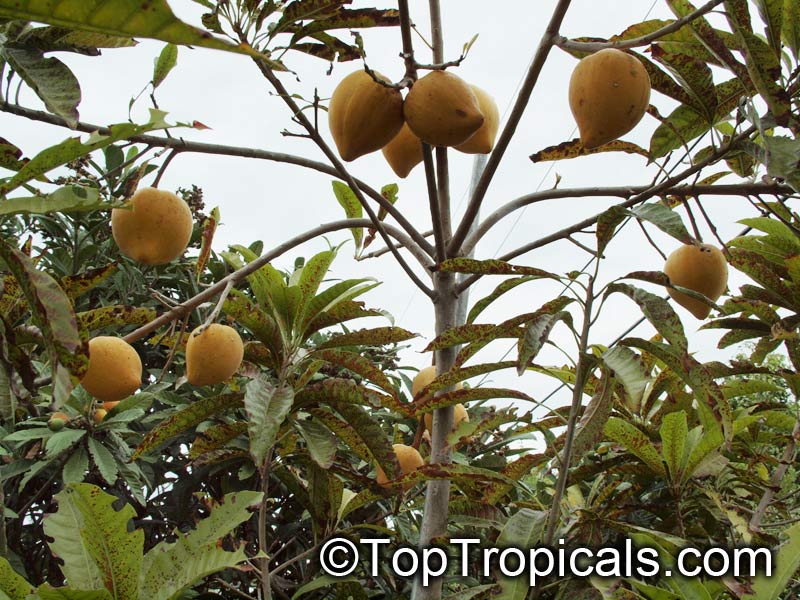Pouteria campechiana- Canistel, the curious heart-shaped Egg Super-Fruit
by Alex Butova, the Witch of Herbs and Cats

...You will be surprised how many health benefits this fruit can offer! Yet is is a beautiful, curiously shaped piece of Nature's Art, and the tree is super easy to grow. It is relatively cold hardy and fast growing, providing with the first crop within a year or two. Grow your own food!..
What is Canistel Tree - Pouteria campechiana?
Pouteria campechianacommonly known as Canistel (other common names are the Eggfruit,Cupcake fruit, Zapote Amarillo, Chesa), is anevergreenfruit tree in Sapodilla family (Sapotaceae). This tree is native to Southern Mexico, Belize, Guatemala and El Salvador. It is found in plantations in many countries ofLatin AmericaandWest Indies: inCosta Rica,Brazil, theDominican Republic,and in theUnited States.

The edible part of the tree is its fruit, which is colloquially known as anEgg Fruit. It is believed to be one of the first fruit species cultivated by the Incas culture as evidenced by pottery canistel-shaped antique bottle found in Peru and dated of 250 years AD. During World War II, British pilots and crewmen were under training in the Bahamas, and showed great fondness for this special fruit, they bought all they could find in the market. So these exotic fruits conquered Europe!
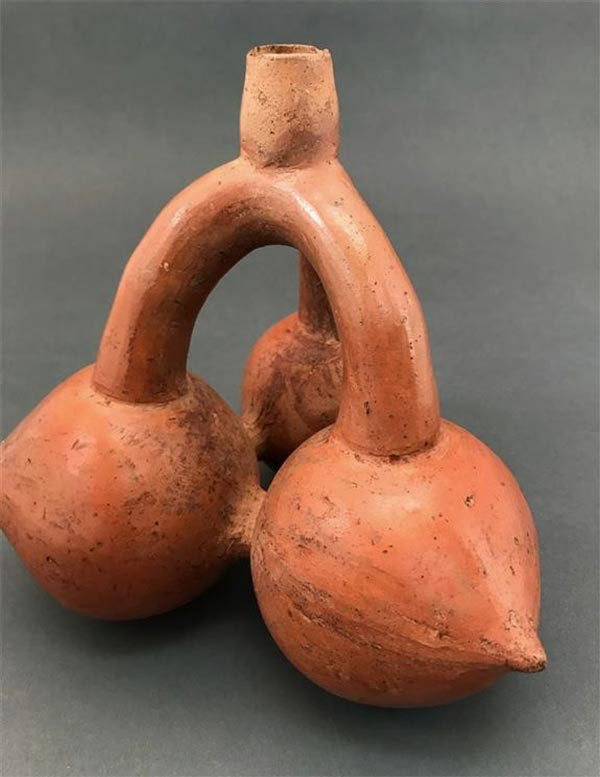
Antient bottle of Incas made in shape of the Canistel
Nowadays Canistel cultivated also in other countries, such asIndia Australia, Cambodia, Vietnam, Indonesia, Sri Lanka,Nigeria, and the Philippines. It becomes a popular backyard tree in Florida.
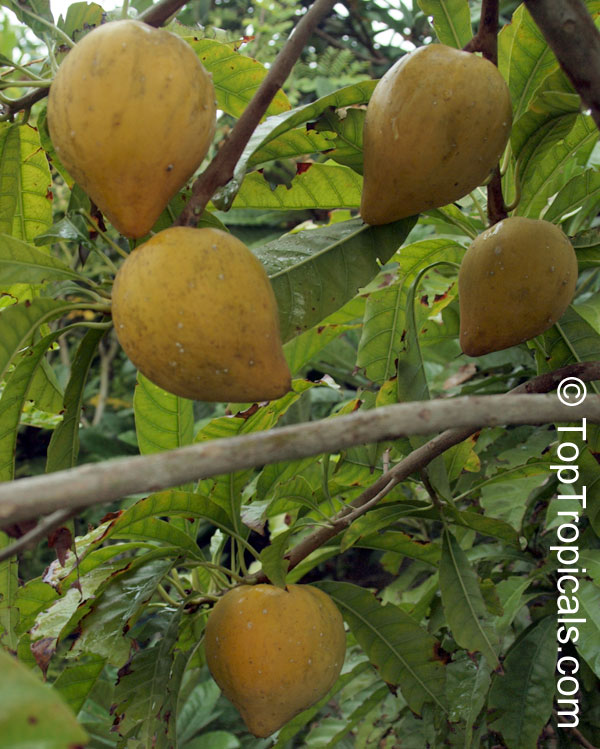
Botany of the plant - Canistel, Pouteria campechiana
The tree is of medium size, generally no more than 25 ft, and slender in habit, with a dense spreading crown. It has finely-ribbed, dark gray trunk and horizontal branches. Young branches are velvety brown. The plant is rich in white gummy latex in every part of the tree. It is extracted from the tree and has been used to adulterate chicle.
Its leaves are grouped in the form of bells. They are quite long and narrow of a raw green.
Fragrant, bisexual flowers are solitary or in small clusters, borne in the leaf axils or at leafless nodes.
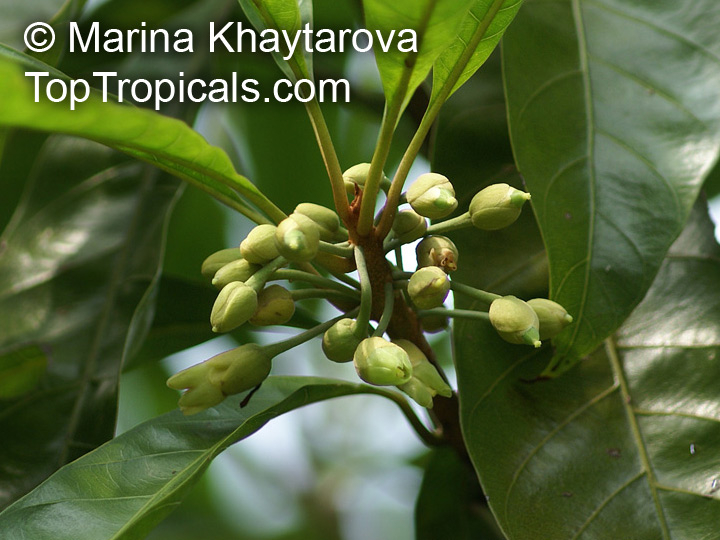
The flowers are greenish in the shape of an elongated bell. They give birth to fruits of very varied forms. The shape and size of the fruit is highly variable, depending on the cultivar. The better selections consistently produce large, ovate fruit with glossy skin weighing upwards of 14 oz (400 g). The flesh is somewhat pasty, although the best varieties have a creamy, mousse-like texture. The flavor is rich and is reminiscent of an egg custard.

The fruit may contain one to six large, brown seeds.
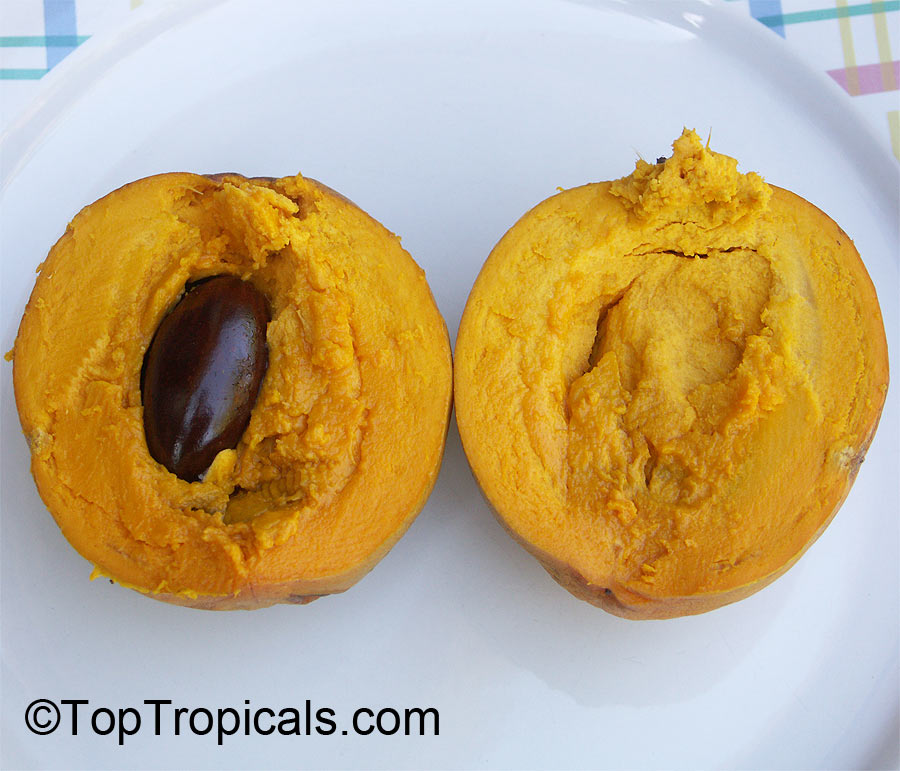
What is so special about Canistel fruit?
Canistel is the showiest edible fruit of the family. Extremely variable in form and size, it may be nearly round, with or without a curved beak, or may be somewhat oval, spindle-shaped, or even heart-shaped. On ripening, the very smooth and glossy skin turns lemon-yellow or pale orange-yellow. The fruit is harvested when its skin turns yellow before it cracks.
Beneath the skin the yellow flesh is relatively firm and mealy. Toward the center of the fruit it is softer and more pasty. It has been often likened in texture to the yolk of a hard-boiled egg (hence one of the common name of these fruits).The flavor is sweet, musky, and somewhat like that of a baked sweet potato.
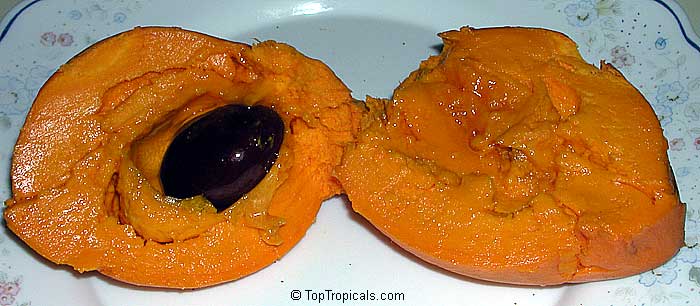
Canistel culinary
The fruit can be eaten with salt, pepper and lime or lemon juice or mayonnaise, either fresh or after light baking.
The pureed flesh may be used in custards or added to ice cream mix just before freezing. A rich milkshake, or "egg-fruit-nog", is made by combining ripe Canistel pulp, milk, sugar, vanilla, nutmeg or other seasoning in a blender.
Canistel pulp can be used as a spread on a toast, for making pancakes, cupcakes, jam, and marmalade.
In Thailand fresh fruit are eaten raw, they can also be used to make desserts such as cakes, custard, jam, jelly, pancakes or baked.
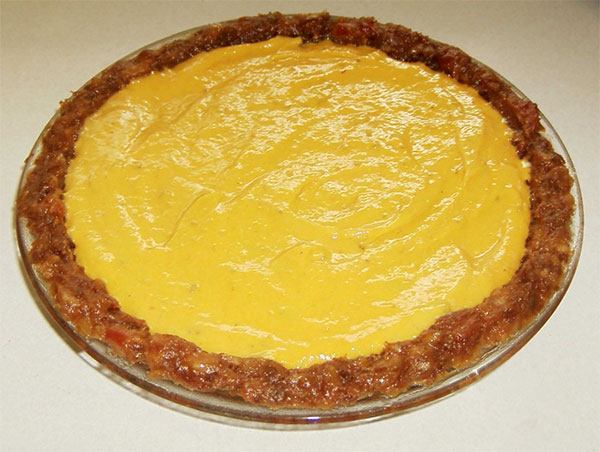
How to store ripe Canistel fruit?
Canistel will keep fresh for one to two months if stored in the refrigerator at 55F and 80 percent relative humidity. The pulp when stored in the freezer will keep up to six months. Some people mix the pulp with sugar prior to freezing for obtaining best results.
Just remember to take the seeds out before putting in the refrigirator or a freezer in case you want to plant them. Canostel is a tropical plant, and cold temperatures will kill the seed.
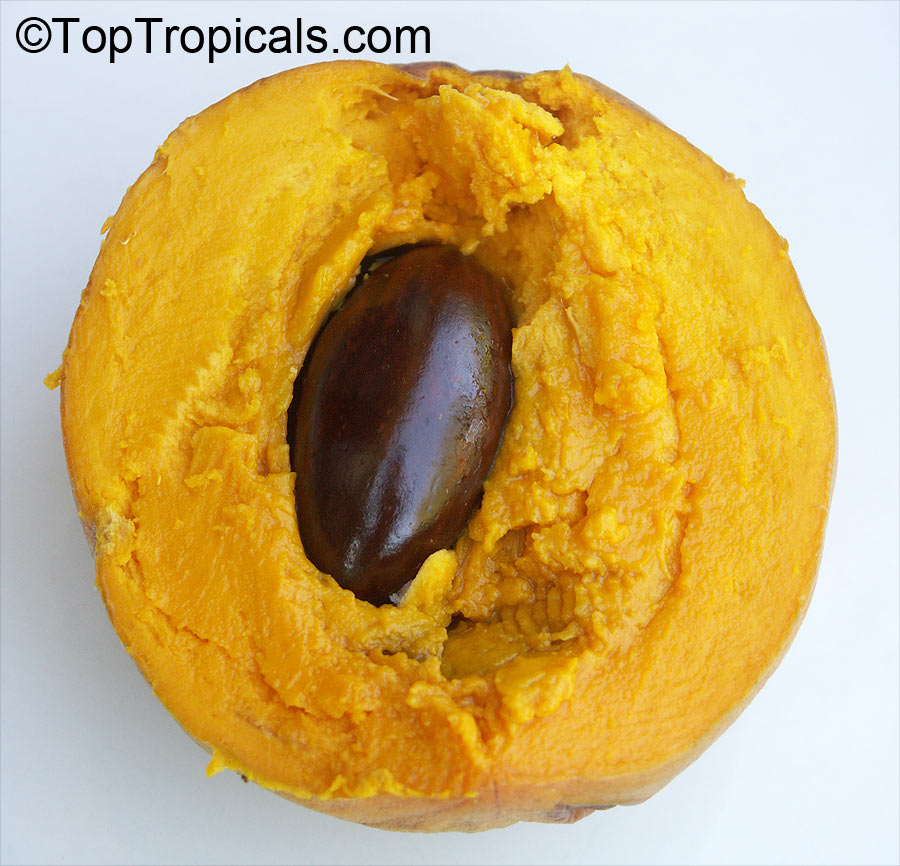
What are the 10 greatest health benefits of the Canistel fruit?
Pouteria campechiana, Canistel Tree, is very popular fruit in the tropics and subtropics. It is often cultivated in tropical and warm subtropical regions, both for its edible fruit and as an ornamental. In addition to its excellent taste, it is also a very useful plant.
Just like most other fruits, Canistel is also rich in a wide range of nutrients including many essential vitamins, minerals and antioxidants. These nutrients contribute to the various health benefits offered by this fruit. Given below are some of the reasons why you should consider adding Canistel to your regular diet.
1. Canistel is good for heart
If you are suffering symptoms of high blood pressure, it means there is something wrong with your heart. Consuming canistel fruit help you regulating blood pressure and at the same time promoting healthy heart because Canistel fruit is loaded with certain minerals especially potassium to prevent the worst effect of sodium in your blood stream to your heart.
2. Canistel lowers the risk of diabetes
Canistel is a wonderful source of niacin. A chemical substance known as Niacinamide is a constituent of niacin that has been found to be effective in preventing diabetes. According to research, niacin amide helps in improving the effectiveness of the oral drugs that are used in the treatment of diabetes. In addition to the effects of niacin, the fiber contained in this fruit also helps in regulating blood sugar levels.
3. Canistel lowers the risk of cataract
Right yellow color is the clear sign that this fruit is an excellent source of beta-carotene. One of the health benefits of beta-carotene is lowering the risk of all kind of diseases caused by macular cell degeneration mostly occur in senior age and among those diseases, cataract is the most common case.
4. Canistel treats osteoarthritis
Niacin and Niacin amide present in Canistel have been found to be effective in the treatment of arthritis. Niacin amide helps in increasing joint mobility and niacin helps in improving muscle strength, rebuilding worn out cartilage and in reducing weakness of muscles. Niacin also has anti-inflammatory effect, which makes it a good remedy for rheumatoid arthritis.
5. Canistel prevents cancer
Canistel fruits is excellent source of vitamin A, vitamin C and beta-carotene. They are some types of antioxidants that have been proven to be effective in preventing the development of cancerous cells. Additionally, this fruit is also packed with some vitamin from vitamin B complex that well known to be effective to fight cancer.
6. Canistel is immunity booster
Canistel fruits is an excellent and natural immunity booster due to its vitamin C benefits. The bright yellow color of Canistel fruit is enough proof that this fruit is packed with high dosage of vitamin C. This vitamin is super potent antioxidants that will provide protection to your body.
7. Canistel is great for digestion
Canistel is an excellent source of dietary fiber, making it a perfect fruit for improving the health of your digestive system. Fiber helps in promoting regular bowel movements by adding bulk to the stools and removing it easily from the system. Fiber also helps in regulating the blood glucose levels and in eliminating the bad cholesterol from the body.
8. Canistel prevents anemia
Due to the high amount of iron present in Canistel, it is very beneficial for our overall health and it also helps to prevent the risk of anemia. As we all know anemia is a disease of iron deficiency in our body and Canistel is highly rich in iron. So consumption of Canistel on a regular basis can provide sufficient iron in our body and helps in preventing the risk of anemia. Iron helps to improve the production of hemoglobin in our blood cells. Hemoglobin helps to bind the oxygen and nutrition in red blood cells and carry them to each part of our body cells, so that our body cells can get sufficient amount of oxygen and nutrition for the proper growth and development.
9. Canistel promotes healthy bones
Several researches have stated that Canistel fruit is packed with certain minerals such as calcium, iron and phosphorus. It is a common knowledge that calcium and phosphorus are excellent for bone health and iron is essential for the production of red blood cells that prominent in body and bone development.
10. Canistel reduces the risk of Alzheimer’s
Due to the high amount of iron present in Canistel, these fruits is very beneficial to improve the brain health and also helps to improve the oxygenated blood flow to the brain that helps to prevent the risk of nervous system disorders, such as Alzheimer’s disease and dementia.

Recipe: Canistel Custard
Ingredients:
3/4 cup ripe Canistel, mashed
3 eggs
2 1/4 cups milk (scalded)
1/2 cup sugar
1/4 tsp. salt
1 Tbsp. lime juice
1 tsp. cinnamon
Directions:
1. Beat eggs lightly. Stir in sugar, fruit & lime, salt & cinnamon.
2. Add hot milk slowly, while stirring. Pour into buttered custard cups.
3. Set in pan of hot water about 1 inch deep.
4. Bake at 350F about 30-40 minutes, until custard is done.
And at last but not least, Canistel is a sweet treat: Canistel Custard!

How to grow Canistel Tree
This medium sized tropical tree is very easy to grow and relatively cold hardy. Not fussy about soil or water.
It is a great exotic fruit tree for any size yard, roots are not invasive and the tree can be planted near driveways and walkways.
Young trees should be protected from frost, while mature trees can take light freeze with almost no damage. The tree will happily grow and fruit in container, it is a good candidate for potting culture. Grafted tree will start flowering right away, seedlings usually take a few years until flowering and fruiting. Canistel is a heavy feeder, and regular applications of fertilizer will encourage flowering and fruiting. Use Sunshine C-Cibus in combination with micro-elements Superfood for the best results.
It is a winter bloomer, can bloom and fruit twise a year! Fruiting season can be from Fall through Spring.
Considering all the health benefits of the fruit, every tropical gardener should have Canistel tree in their collection, and it won't take too much space or care!
